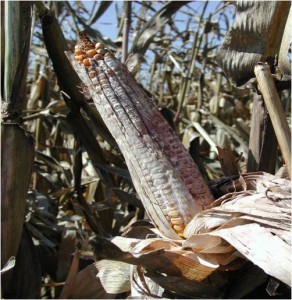 There is no doubt that feed quality will be a challenge this year. Four of the nation’s top producing corn states have already been given permission to blend corn at levels exceeding the FDA aflatoxin action level and other states may soon be following in pursuit. As the USDA reports this year’s corn supply at an eight-year low, much of the Midwest is trying to utilize this year’s poor corn crop for their livestock.
There is no doubt that feed quality will be a challenge this year. Four of the nation’s top producing corn states have already been given permission to blend corn at levels exceeding the FDA aflatoxin action level and other states may soon be following in pursuit. As the USDA reports this year’s corn supply at an eight-year low, much of the Midwest is trying to utilize this year’s poor corn crop for their livestock.
While Aspergillus, the mold responsible for aflatoxins, has been the most notorious culprit in the 2012 harvest due to its carcinogenic properties, other toxins may show up this year. The hot and dry growing season provides just the right climate for the mold Fusarium verticillioides, which causes fumonisin B1 and can have serious effects on horses and swine. Penicillium is another mold of concern, especially during storage. Silage that is dry, poorly packed or has a significant amount of soil contamination can allow Pencillium to produce PR toxin, patulin, mycophenolic acid, roquefortine C, penicilic acid and several other mycotoxins.
In order to better identify mycotoxins, Alltech recently launched its 37+ Program. The mass spectrometry technique LC-MS2 can investigate 38 different mycotoxins quantitatively, and more than 50 others qualitatively in less than 15 minutes per sample analyzed, with limits of detection in the parts per trillion range. This approach allows a broader analytical approach compared to other commercial methods that can only see a ‘snapshot’ of contamination.
For more information about the 37+ Program or any concerns relating to mycotoxins, please call the Mycotoxin Hotline at 866-322-3484.
